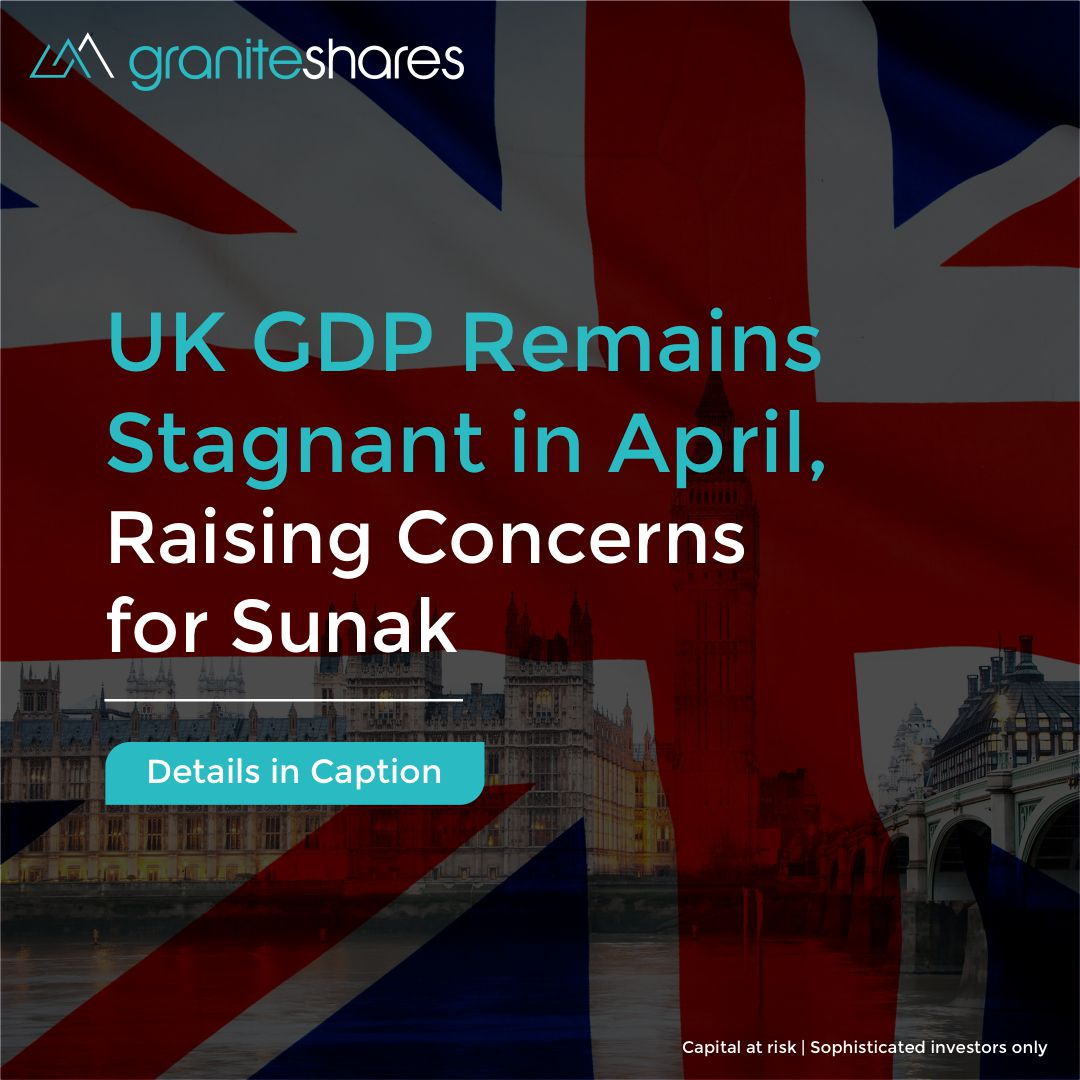UK GDP Stagnates in April, Raising Concerns for Sunak
Posted:
UK economic growth came to a halt in April, according to preliminary figures published on Wednesday, stalling the ongoing muted rebound from last year's recession, just weeks before the national election.
According to data published by the Office for National Statistics on 12th June, the zero growth figure for April contrasts with the 0.4% expansion in March. This also represents a significant slowdown from the 0.6% growth in the first quarter, which ended last year’s technical recession.
However, there was a slight silver lining in the longer-term data, with GDP showing a 0.7% increase in the three months leading up to April compared to the previous quarter.
Although construction output declined by 1.4%, marking its third consecutive decrease, and production output fell by 0.9%, growth continued in the dominant services sector, which expanded by 0.2%.
The UK had already achieved moderate growth in each of the first three months of the year, resulting in an exit from a shallow recession for the first quarter of the year overall.
Moreover, the figures followed labor market data released on 11th June, which showed declining employment and rising unemployment but continued strong wage growth.
The figures revealed that services output grew by a robust 0.9% over the three months to April, driven by strength in the tech sector, scientific research and development, and advertising.
However, growth slowed sharply in April due to wet weather, which discouraged consumer spending in shops and restaurants and disrupted building sites, resulting in a 1.4% drop in construction output.
Manufacturing output also declined by 1.4% between March and April, impacted by a fall in pharmaceutical manufacturing, which had seen a sharp, one-off increase the previous month.
Following the data release, sterling remained unchanged against the dollar at $1.274. Investors anticipate the Bank of England will implement its first interest rate cut by November, with a second quarter-point reduction expected by March next year.
Although the weather has fortunately improved recently, potentially boosting May's economic performance, the second quarter has begun sluggishly and will need to make significant progress if it is to match the 0.6% growth recorded in the first quarter.
Outlook for Rate Cuts
The prospect of interest rate cuts by the Bank of England has evolved notably since last month's quarterly growth report. Initial expectations for rate cuts in June have waned, with market sentiment now focusing on August or September for potential adjustments.
The Bank of England is scheduled to convene on June 20, 2024, to deliberate on its monetary policy direction. The recent labor data, revealed an unexpected increase in UK unemployment to its highest level in two and a half years. Despite this, wage growth surpassed expectations, registering a robust 6%, thus presenting a mixed outlook for monetary policymakers.
On Wednesday, figures revealed that the UK's value of goods imports surged by 8.2% in April, while the value of exports remained unchanged. This fresh economic data could potentially serve as political ammunition as the country approaches a general election in just over three weeks. The economic performance of the incumbent Conservative Party and the proposed tax and spending plans of its rival Labour are central battlegrounds of the campaign. Prime Minister Rishi Sunak has emphasized the recent decline in UK inflation in his speeches.
Labour's economy spokeswoman, Rachel Reeves, commented on the Wednesday data, stating: "Rishi Sunak claims we have turned a corner, but the economy has stalled and there is no growth."
Sources:
Visit Us: https://graniteshares.com/institutional/uk/en-uk/
Capital at Risk | Sophisticated Investors Only

GraniteShares
GraniteShares

